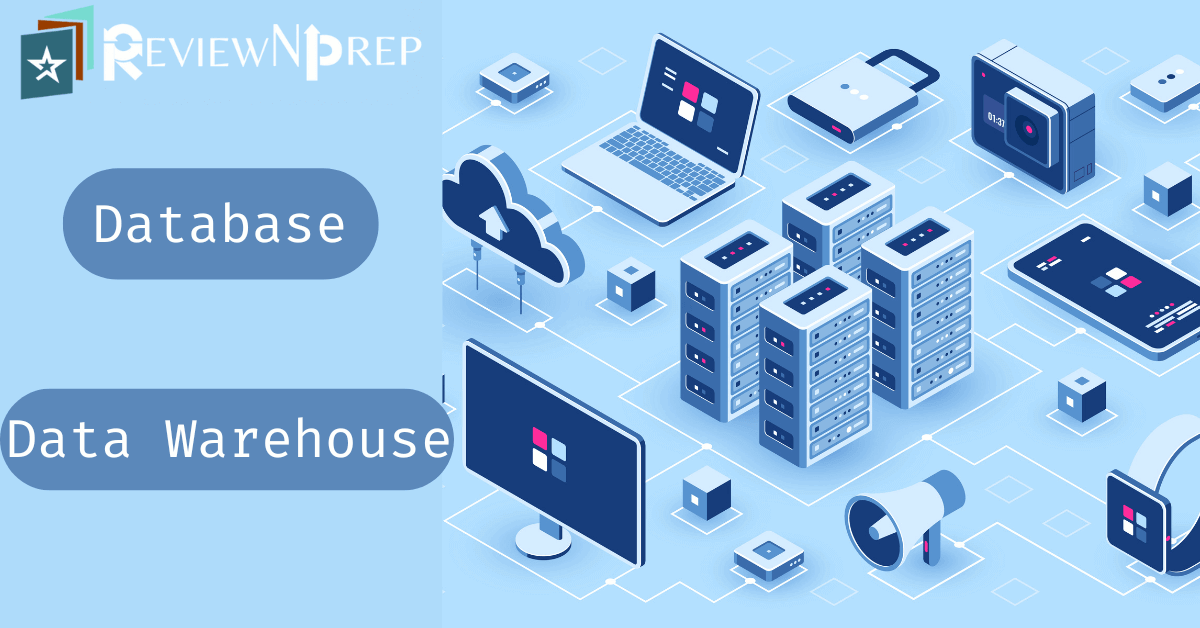|
|
Data storage and analysis systems are becoming the backbone of many organizations. Big data analysis not only helps companies optimize their operations but also provides valuable insights into customer behavior and preferences. But what is the difference between a database and a data warehouse?
Both databases and data warehouses are used to store different types of data, however, they serve different purposes. A database stores real-time data that is used to process transactions and generate reports on day-to-day operations. On the other hand, a Data Warehouse stores all kinds of historical business data for making business decisions.
Both a database and a Data Warehouse play important roles in any organization’s technology stack. It is necessary to understand the differences between these two systems in order to use them effectively. This article will provide an overview of both technologies, discuss the similarities between them, as well as highlight their key differences.
Table of Contents
What is a Database?
A database is an organized collection of data. It provides access to information that can be queried and manipulated for various purposes. Databases are used to store large amounts of data in a secure, structured way. Different types of databases include relational, NoSQL, object-oriented, distributed and more.
Some common examples of SQL or relational databases are Oracle, Microsoft SQL Server, MySQL and IBM Db2. These databases can be stored on-premises or on cloud. Cloud providers like AWS, Azure, Google Cloud Platform (GCP), Oracle provide their own version of SQL databases on the cloud.
Similarly common example of NoSQL databases are MongoDB, Cassandra, MariaDb, and Hbase. These databases don’t use the SQL language and can be used for different purposes.
What is a Data Warehouse?
A data warehouse is a centralized repository of organizational data which can be used for reporting and analysis. Data warehouses are designed to store large amounts of historical data for business intelligence applications, providing quick access to analysis of data over longer periods of time. It’s similar to a database, but it contains a lot more data, making it easier to find what you’re looking for.
What is a data mart?
A data mart is a layer of the business intelligence (BI) architecture that contains a subset of corporate data organized for query and analysis. Data marts are generally created to provide focused access to data for specific business needs, such as sales or customer segment analysis. They are usually centered on an individual user’s department or a business unit in an organization, and can be constructed from multiple sources. Data marts typically contain summarized and aggregated information compared with the more detailed data stored in the organization’s enterprise data warehouse (EDW).
What is OLAP vs OLTP?
OLAP (online analytical processing) is a type of processing designed to support complex analytics, while OLTP (online transaction processing) is optimized for creating, reading, updating and deleting transactions using fast query processing. Whereas OLAP looks at data from an analytical perspective, OLTP looks at individual transactions. While with OLAP and OLTP are online processing systems, generally speaking, OLAP systems are faster in retrieving the data needed for analytics and reporting purposes and can handle large volumes of data quickly using complex queries. In contrast, OLTP is geared towards fast and accurate data manipulation as it focuses on providing quick responses to user requests.
What are the differences between a data warehouse and a database?
Both a data warehouse and a database are data storage systems, typically used to store large amounts of structured data. Both can be queried and updated with transactions. They both contain data about one or more entities, such as customers and products.
The main difference between the two is that a data warehouse is designed specifically for analysis, while databases are designed mostly for “transactional” use. Additionally, data warehouses store historical and aggregated data (often from disparate sources), whereas databases often only store recent and/or current states of information. This can vary based on the application.
Below is a quick comparison chart:
| Data warehouse | Database | |
|---|---|---|
| Purpose | Analysis of data | Recording data |
| Data Type | Historical Data (often summarized) | Real Time (Detailed data including metadata) |
| Processing Method | OLAP (online analytical processing) | OLTP (online transactional processing) |
| Type of collection | Subject-oriented | Application-oriented |
| Users | Limited | Can vary from 00’s to 000’s and more |
| Query | Complex analytical queries | Transaction queries (CRUD) |
| Service Level Agreement (SLA) | 99.99 upwards for mission critical apps | Flexible (refreshes usually occur once a day) |
Who are the users of database vs data warehouse?
Database users include businesses, government agencies and organizations. These users primarily utilize databases for record keeping, reporting and data analysis. The transactional databases are often connected to an application driven through a web interface. However, based on how the data is generated, there could be no web interface and still data being inserted into the database. IT professionals, clients, corporate clerks, and frontline employees like bank tellers, cashiers, hotel guest checkin etc use these systems to make simple queries with databases.
Related: Essential skills needed to become a top rated data scientist
Blog
Data warehouses, on the other hand, are used mainly by enterprises for advanced analytics such as data mining and predictive analytics. Business intelligence professionals typically use a data warehouse to get insights from large amounts of disparate raw data. The common roles accessing data warehouse include business analysts, data engineers, data scientists and other decision makers within the organization.
Business users utilize reports, dashboards, and analytics tools to get insights from data, monitor business performance, and support decision making.
Conclusion
Now that you know the differences between a data warehouse and a database, it’s easier to decide which is right for your business. If you’re a company that needs to store large amounts of data, a database might be the right choice for you. On the other hand, if you need to use data analysis to improve your business operations, a data warehouse is the perfect tool for you.
In conclusion, databases and data warehouses each have their own advantages, but the choice of which one to use will depend upon what kind of task you are trying to complete with your data. Both have unique strengths that make them an attractive choice for certain tasks.
Hopefully, this article has helped you understand the difference between a data warehouse and a database. Now, you can make an informed decision about which is right for your business.
Image: Designed by fullvector / Freepik
Further Reading:
How to Start your Data Analytics career
Practical applications of SQL and tips to become better at it
Blogs

